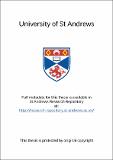Synthetic studies towards new pigments
Abstract
Phthalate ester synthesis. An investigation into various methods of synthesising phthalate esters suitable as precursors for phthalocyanine and other pigment synthesis was conducted. This was achieved via thermal Diels-Alder reactions between 2-substituted furans and dimethyl acetylenedicarboxylate (DMAD), proceeding in high yield. Subsequent aromatisation of the resulting adducts by either sulphuric acid or low-valence titanium also proceeded in good yields. The phenols generated by the acid aromatisation were further reacted in high yields with a range of haloalkanes to form the expected aryl ethers.
Latent pigment investigation Work was also carried out on the synthesis of reversibly soluble "latent" DPP (1,4-diketo-pyrrolo[3,4-c]pyrrole) pigments. The aim was to synthesise a moiety that could be incorporated into a DPP pigment, increasing its solubility in various media. The solublised DPP pigment should then be treatable in situ to precipitate a considerably less soluble aromatic DPP pigment.
2X X-DPP-X Ar-DPP-Ar
It was necessary for the moiety X to be stable to the DPP forming conditions (1), but once it was incorporated into the soluble DPP it had to be easily converted without significant degradation to produce the less soluble aromatic DPP pigment under reasonably mild conditions (2). A variety of methods and moieties were investigated, the main efforts concentrating on two areas: heterobicycloheptadiene "norbornadiene" analogue containing groups, which could aromatise to phenyl-type groups under thermal conditions while extruding various gases, and upon both cis and trans-stilbenyl containing groups which could cyclise to planar phenanthryl groups under suitably oxidative photochemical conditions.
Type
Thesis, MPhil Master of Philosophy
Collections
Items in the St Andrews Research Repository are protected by copyright, with all rights reserved, unless otherwise indicated.

